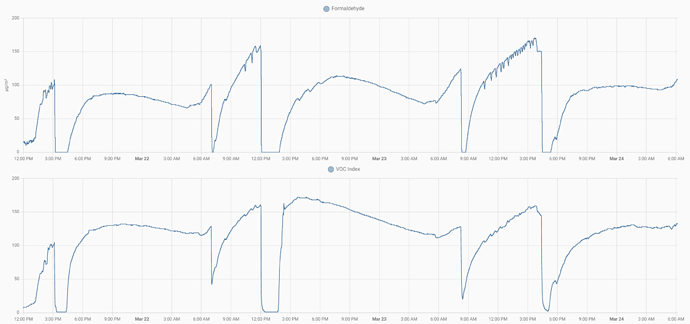tl;dr;
People with 3d printers care about formaldehyde levels. PMS5003S adds formaldehyde level measurements for about $6-8 extra over PMS5003 and I’d love to have a kit with it included available as an option.
Long version:
ABS and, to the lesser extent, PLA, the two most popular 3d printing filament materials as well as many (most?) 3d printing resins emit not just your regular toxicity mixture of VOCs and fine particles, but specifically not insignificant amount of formaldehyde.
The amount of formaldehyde is a function of print temperature/UV exposure to a greater extent than many other VOCs, so having a separate measurement for formaldehyde specifically would be very useful for both health reason and also to have a warning you are pushing your printing material too far out of spec.
I suspect many people in 3d printing space would love to buy a kit - it’s not just me.

